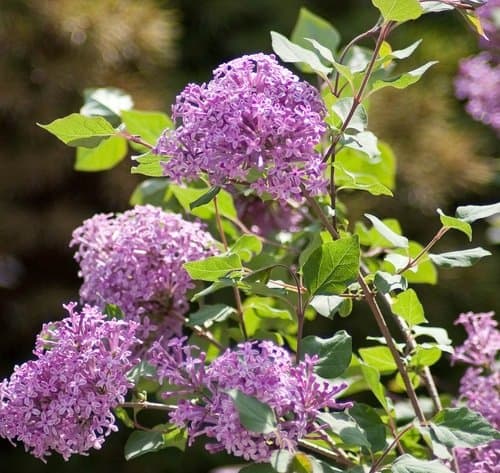
This summer has been considerably more comfortable, unlike the past several years with six to eight weeks of hot, dry weather that stressed me as well as my plants. There has been enough rain, allowing me to relax a bit from the daily watering ritual. Plants have grown well, but so have the spores of moisture-dependent seasonal mildews. Mildew spores are active in late summer when night air is cool and humid, and day air is somewhat drier and warmer. If we get a run of dry days and moist, humid nights, the scene will be set for powdery mildew. I won’t be surprised to see the familiar white flush on my older lilacs later this month.
Powdery mildew isn’t really something to worry about if your plants are generally healthy. It’s one of the many fungal pathogens essential to the process of decomposing plant fibres into humus, and every active compost pile has a thriving mildew colony. Mildew is disfiguring to lilac foliage, but won’t cause any immediate damage to plants. The greatest damage is the slowing of photosynthesis and inhibited growth. But if lilacs are growing in adverse conditions — such as in low light and poor air circulation, and in soil with inadequate drainage and — repeated bouts with seasonal mildew can contribute to the lilac’s eventual demise. Seriously afflicted plants exhibit a powdery white flush on twisted foliage, as well as premature leaf drop. Trying to fight mildew infection requires more work and attention than you might want to devote to the problem (see below). A simple solution is to plant mildew-resistant cultivars, and not encounter the problem.
My newer lilac cultivars, such as pale blue ‘Miss Kim’ (Syringa pubescens ssp. petula ‘Miss Kim’) and the reblooming purple Bloomerang (S. x ‘Penda’) seem unaffected by mildew symptoms appearing on my older lilacs in the garden. Other resistant cultivars are dwarf lilac ‘Palibin’ (S. meyeri ‘Palibin’) and the group of late-blooming Preston lilacs (S. x prestoniae), including pinkish-purple ‘Donald Wyman’, bright pink ‘Miss Canada’, rosy purple ‘James McFarlane’ and lavender ‘Minuet’. The dwarf Fairy Tale Series of lilacs, including reddish-pink Tinkerbelle (S. ‘Bailbelle’), pale pink Fairy Dust (S. ‘Baildust’) and lilac mauve Sugar Plum Fairy (S. ‘Bailsugar’) are also mildew resistant.
Older cultivars developed from S. x hyacinthiflora and S. vulgaris are deeply scented, but unfortunately prone to mildew infections. However, there are some resistant S. vulgaris cultivars, including double purple ‘Charles Joly’, double white ‘Madame Lemoine’, blue ‘President Lincoln’ and creamy yellow ‘Primrose’.
Crabapple trees, privet hedges and roses can also be affected, as well as summer phlox, tuberous begonias, snapdragons and zinnias.
Fungal diseases respond best to preventative treatment, beginning before symptoms are present. Starting in early summer, weekly sulphur or baking soda sprays (1 tbsp./15 mL of baking soda and ½ tsp./3 mL of liquid dish soap mixed with 1 gallon/4.5 L of water) can help to prevent infection. Spraying twice monthly with summer grade horticultural oil (follow package instructions for mixture) is also effective. Treating plants with advanced mildew symptoms is difficult, but if you must, try a copper fungicide sold as bordeaux mixture.
My advice on dealing with powdery mildew is simple: Remove plants that are chronically affected and replace them with mildew-resistant cultivars. And that will be one less thing to worry about.
